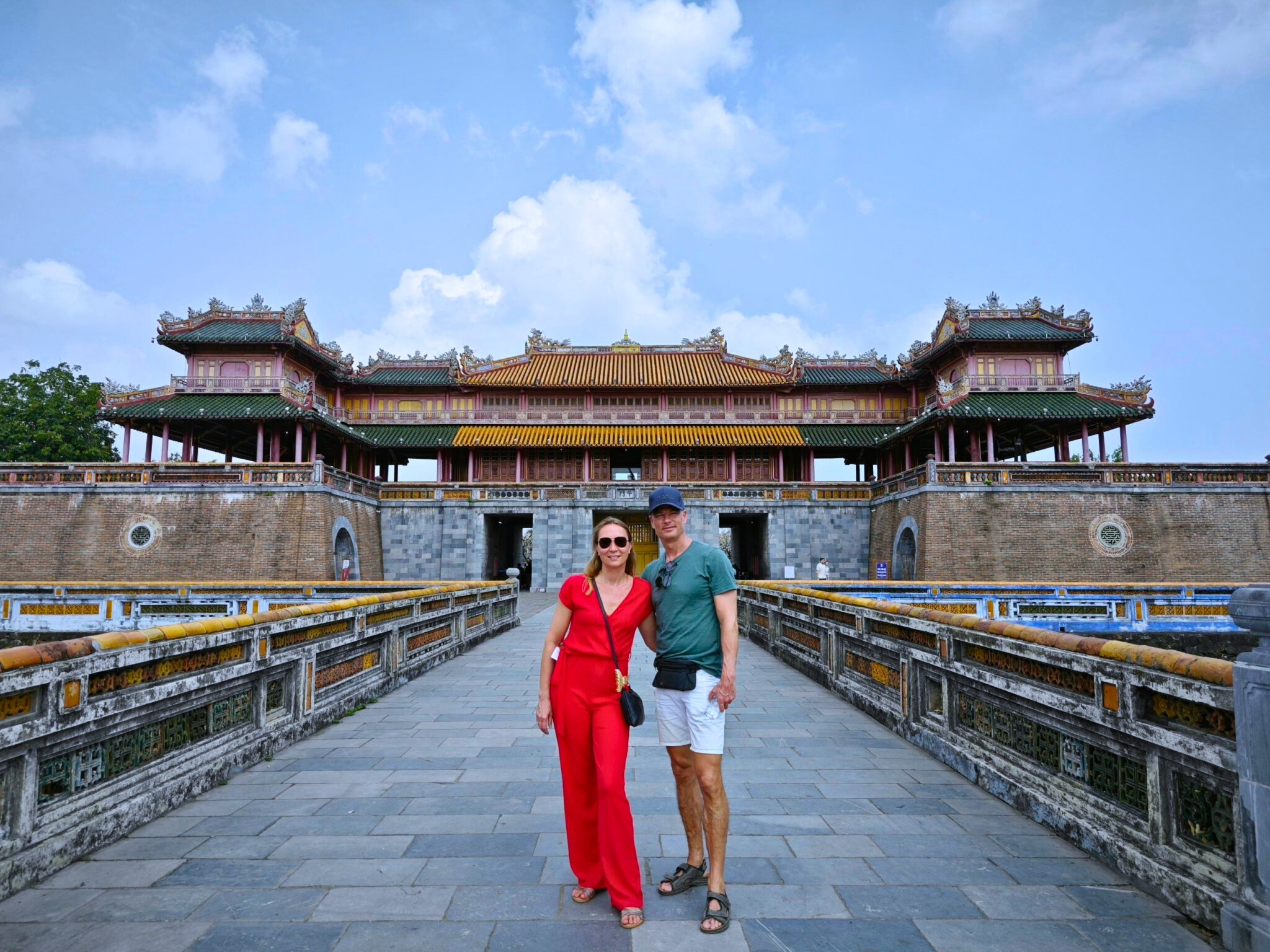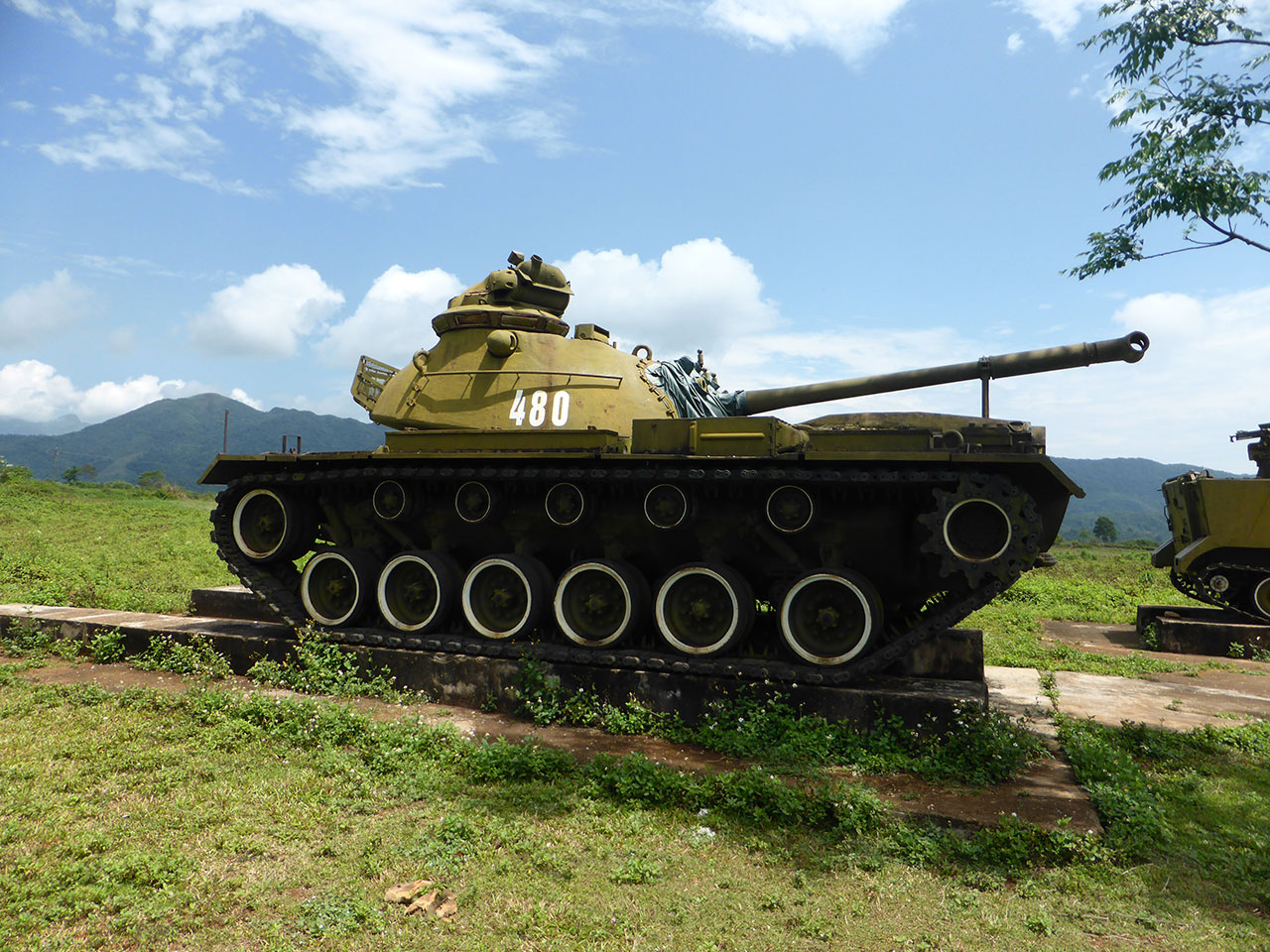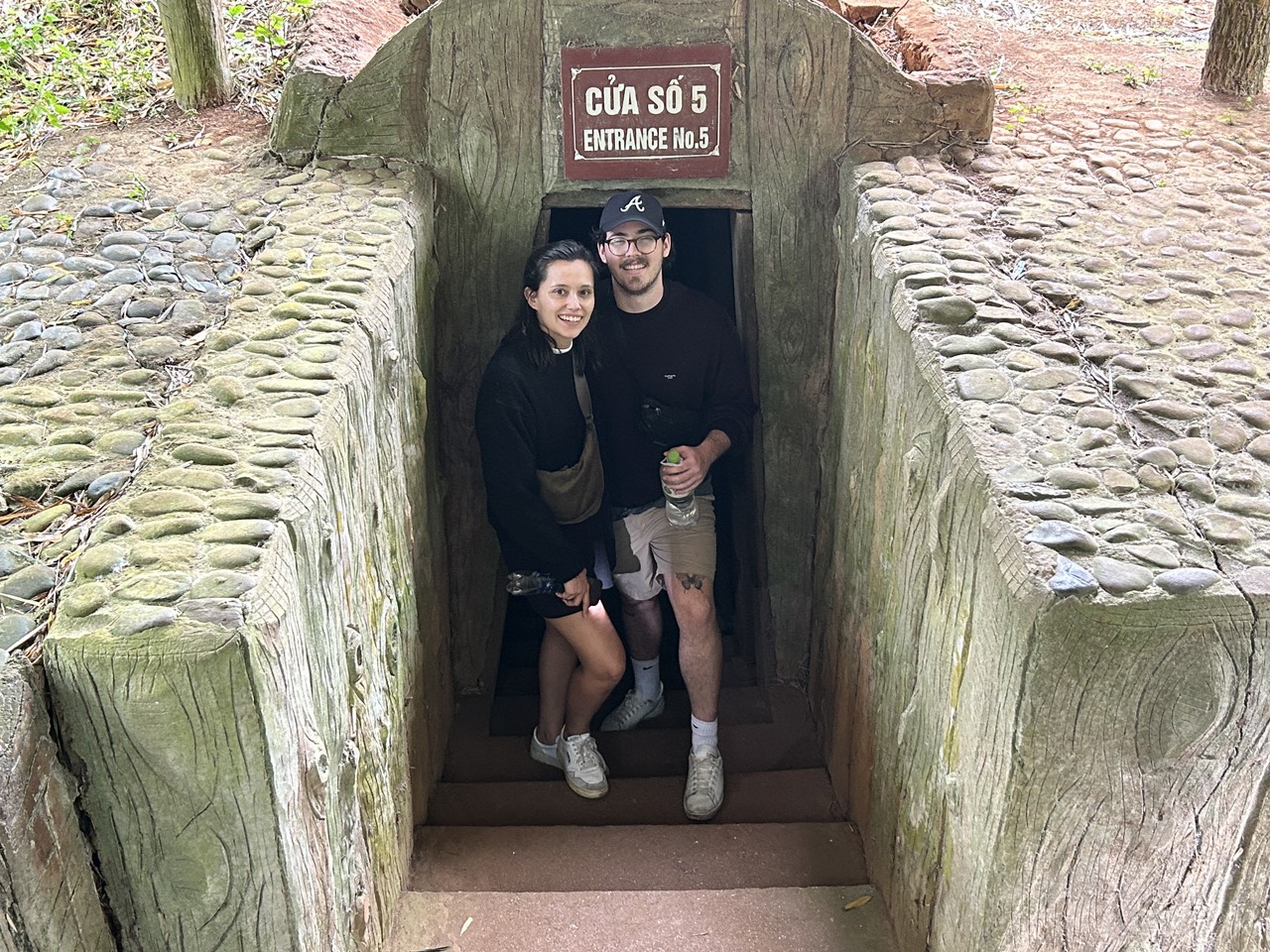Minh Mang Tomb: A Complete Guide to Hue’s Most Symmetrical Imperial Mausoleum
Nestled along the serene banks of the Perfume River, Minh Mang Tomb stands as one of the most architecturally significant royal mausoleums in Hue. This masterpiece of Vietnamese imperial architecture offers visitors a profound glimpse into the Nguyen Dynasty’s golden age and the philosophical mindset of Emperor Minh Mang himself.
Who Was Emperor Minh Mang?
Emperor Minh Mang (1791-1841) was the second emperor of the Nguyen Dynasty, ruling Vietnam from 1820 to 1841. Known for his conservative Confucian beliefs and strong administrative capabilities, he left an indelible mark on Vietnamese history. His reign was characterized by:
- Administrative reforms that strengthened central authority
- Resistance to Western influence and Christianity
- Cultural preservation and promotion of Confucian values
- Extensive construction projects, including his own tomb
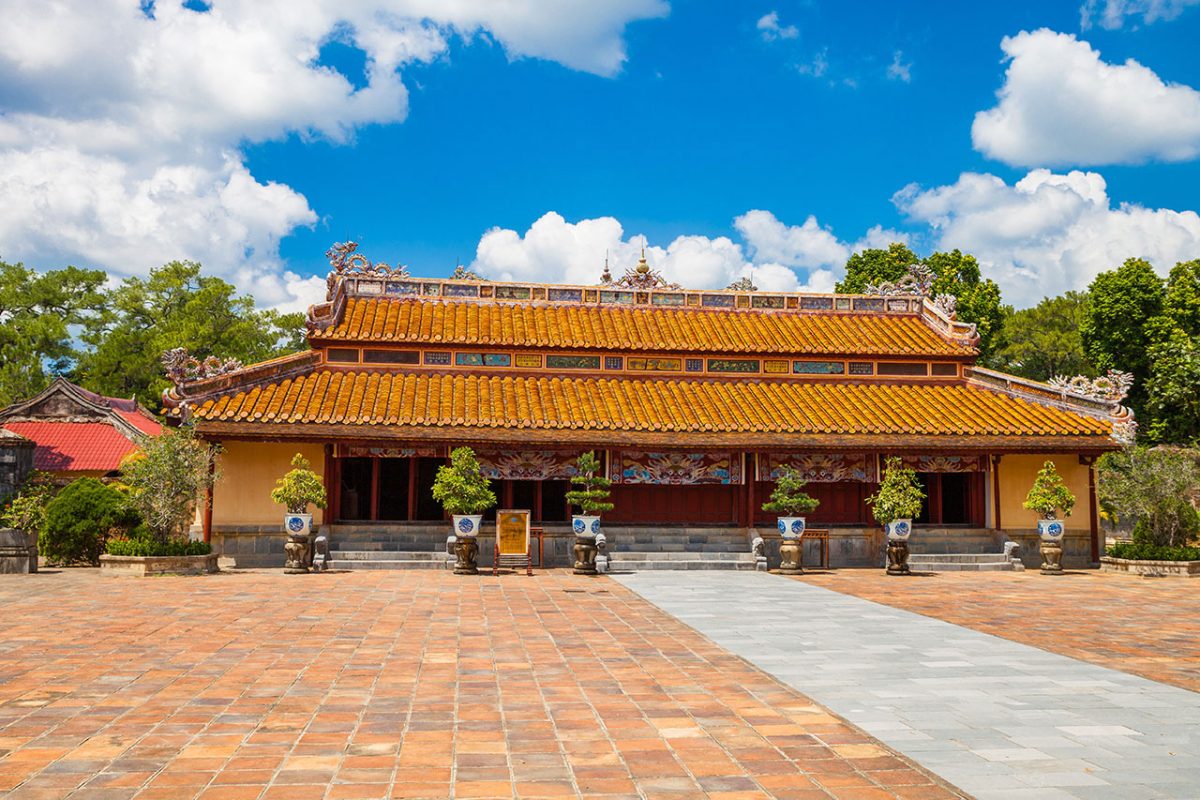
Location and How to Get There
The Minh Mang Tomb is located approximately 12 kilometers south of Hue city center, on the west bank of the Perfume River. Getting there is straightforward with several transportation options:
| Transportation Method | Duration | Cost (USD) | Best For |
|---|---|---|---|
| Motorbike/Scooter | 25-30 minutes | $5-8 (rental) | Independent travelers |
| Taxi/Grab | 20-25 minutes | $10-15 | Comfort seekers |
| Dragon Boat Tour | Half day | $15-25 | Scenic experience |
| Guided Tour | Full day | $30-50 | First-time visitors |
For the most authentic experience, consider taking a dragon boat tour along the Perfume River, which typically includes stops at multiple royal tombs and pagodas.
Architectural Marvel: Understanding the Design
What makes Minh Mang Tomb truly exceptional is its perfect symmetry and harmonious integration with the natural landscape. The complex covers 18 hectares and features:
1. The Sacred Axis
The tomb follows a straight axis from the main gate to the emperor’s burial mound, symbolizing the direct path to heaven. This 700-meter axis passes through:
- Dai Hong Mon (Great Red Gate) – The main entrance
- Bi Dinh (Stele Pavilion) – Housing the emperor’s biography
- Hien Duc Mon (Gate of Manifested Virtue)
- Sung An Temple – The main worship hall
- Minh Lau (Pavilion of Light) – The spiritual center
- La Thanh (Circular Wall) – Enclosing the burial mound
2. Water Features and Bridges
The tomb complex incorporates three beautiful lakes:
“Water represents the flow of life and the continuity of the dynasty. The lakes at Minh Mang Tomb aren’t merely decorative; they’re integral to the feng shui principles that govern the entire design.” – Vietnamese Architecture Expert, Dr. Nguyen Van Huy
Must-See Highlights During Your Visit
Dai Hong Mon Gate
Dai Hong Mon is the main gate, the entrance to King Minh Mang’s tomb. The gate was built of lime and brick, has 3 paths and 24 thatched roofs with sophisticated architecture and decorative motifs of carp turn into dragons, dragons and clouds. According to historical records, Dai Hong Mon was only opened once to bring King Minh Mang’s coffin into the tomb, then it was closed until now. To enter and exit the tomb, visitors must go through two side gates, Ta Hong Mon and Huu Hong Mon.
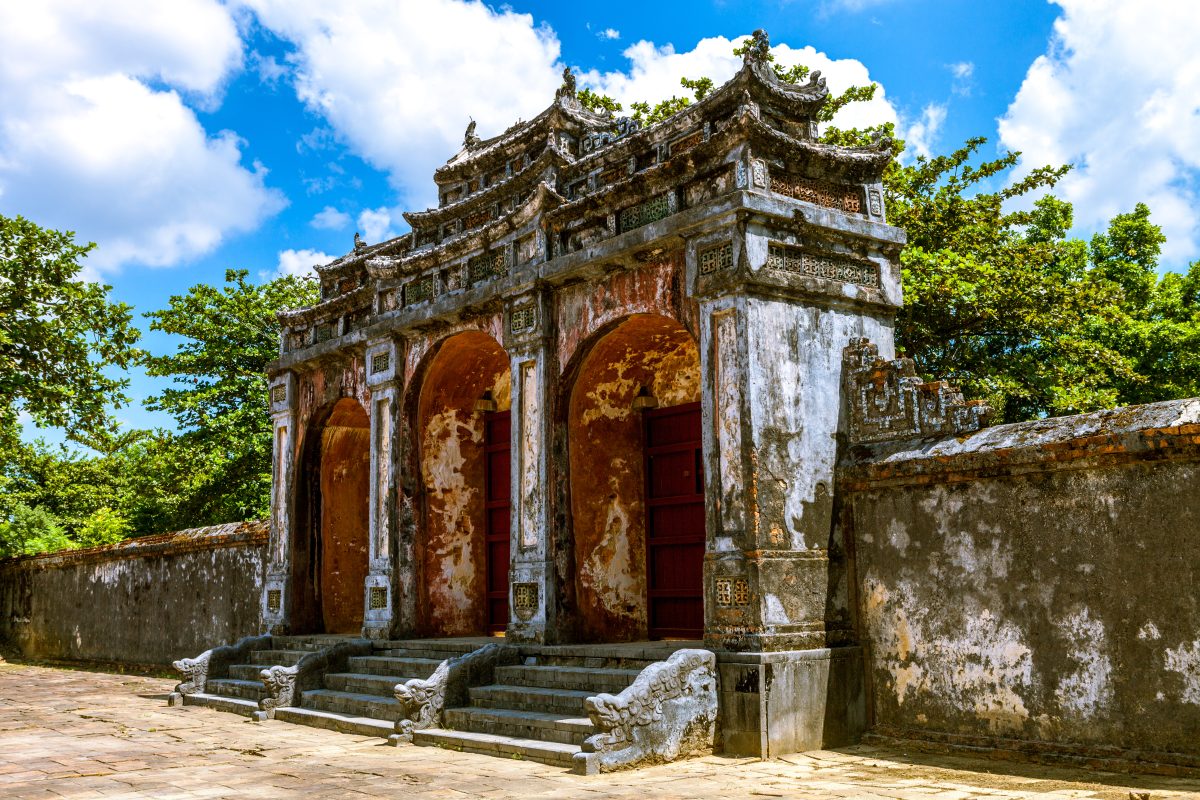
Bai Dinh Yard
Behind Dai Hong Mon Gate is a large courtyard paved with Bat Trang tiles called Bai Dinh. On both sides of the courtyard are rows of stone statues of mandarins, elephants and horses standing in attendance. The highlight of this courtyard is the Thanh Duc Than Cong stone stle written by king Thieu Tri to remember the biography and merits of his father.
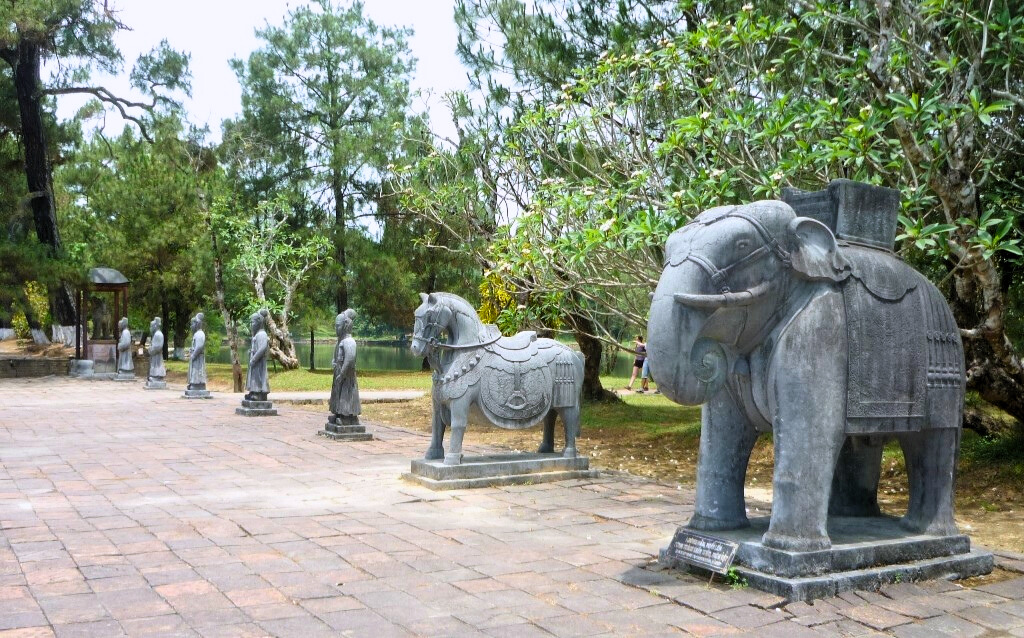
Minh Lau
Minh Lau in Minh Mang Tombs means “Shining grace of heaven”, a place for the King to contemplate on cool moonlight nights. The building has a square architecture, two floors, eight roofs, located on Tam Dai Son hill and behind is the Longevity flower garden. Minh Lau is beautifully decorated, imbued with the breath of Confucianism and philosophy of life.
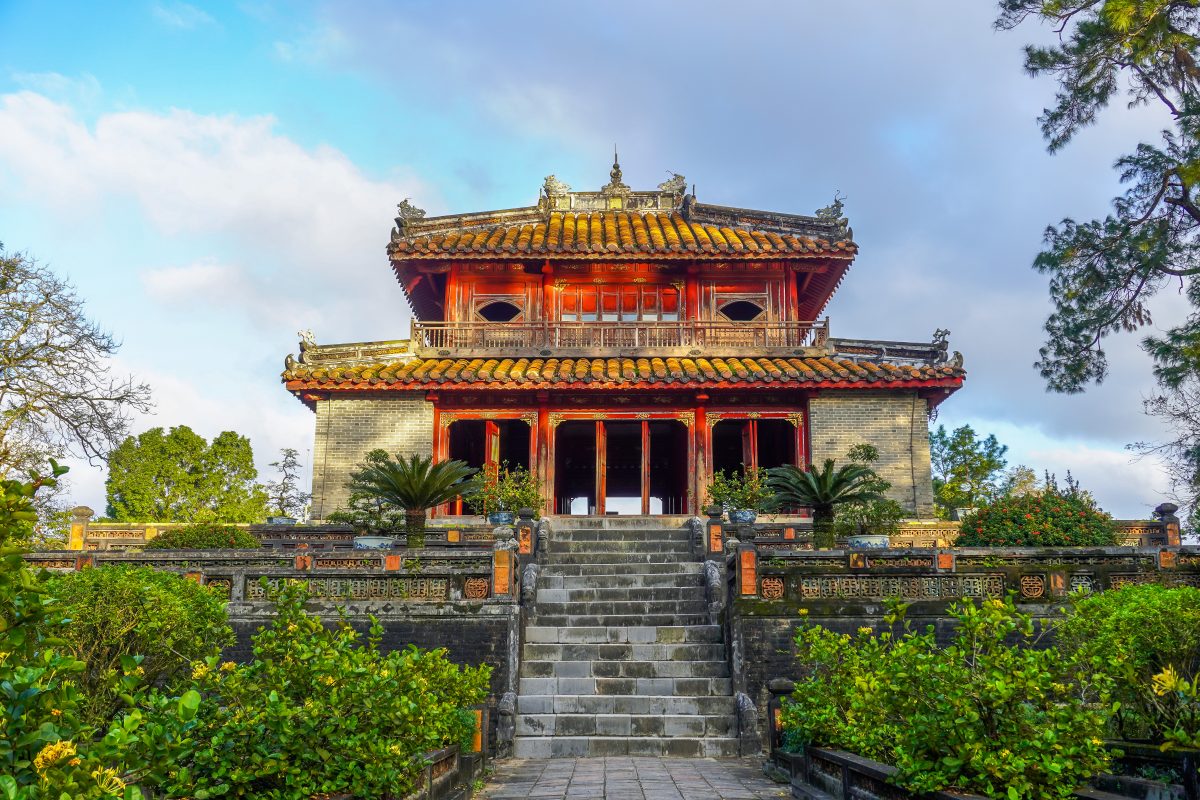
Hien Duc Mon Gate and Sung An Palace
The center of Minh Mang Tomb includes Hieu Duc Mon and Sung An Palace, where the King’s tablet and his queen Ta Thien Nhan are worshiped. Entering the palace, you will feel the sacred, ancient space with a world full of relaxation and transcendence. The building also has 17 stone steps leading visitors to Hoang Trach Mon with a cool blue sky, shaded trees, fragrant wild flowers and the immense beauty of the lake interspersed with small lotus platforms.
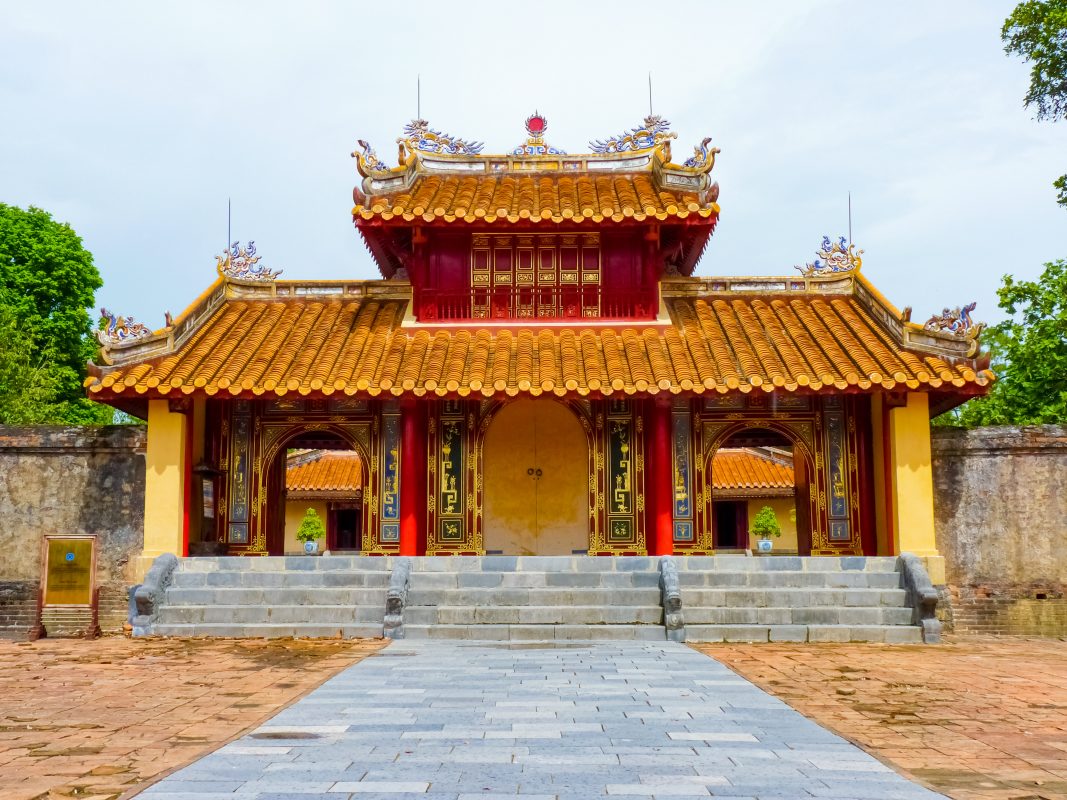
Buu Thanh
This is a circular wall surrounding the emperor’s tomb. The walls are made of bricks, covered with yellow tiles, and topped with a lotus-shaped dome. The tomb is located between the city walls, hidden from view, as a sign of respect and mystery.
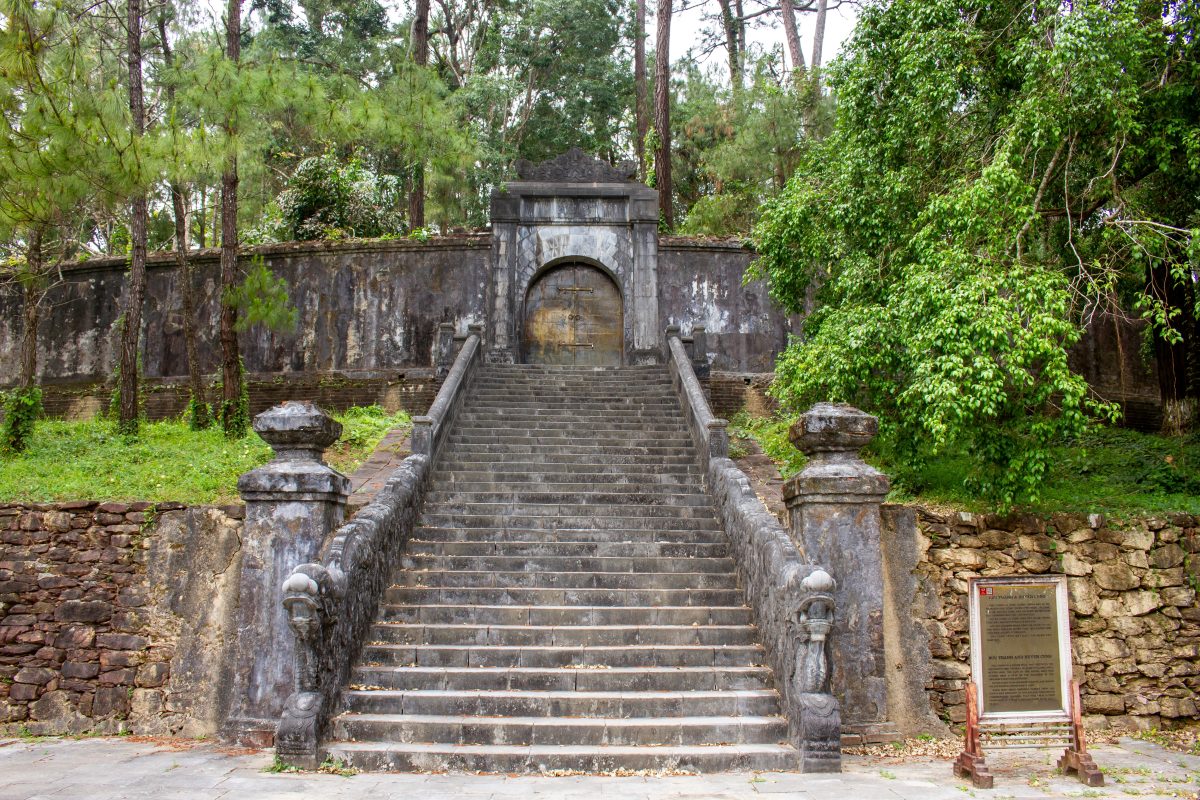
Best Time to Visit
Timing your visit to Minh Mang Tomb can significantly enhance your experience:
| Season | Weather | Crowds | Photography |
|---|---|---|---|
| March-May | Pleasant, occasional rain | Moderate | Good lighting |
| June-August | Hot and humid | High | Harsh midday sun |
| September-November | Cool, possible flooding | Low | Dramatic skies |
| December-February | Cool and dry | Moderate | Best conditions |
Pro tip: Visit early morning (7:00-9:00 AM) or late afternoon (3:00-5:00 PM) for the best lighting and fewer crowds.
Practical Visitor Information
Opening Hours and Tickets
- Opening hours: Daily 7:00 AM – 5:30 PM (summer), 7:30 AM – 5:00 PM (winter)
- Entrance fee: 150,000 VND (approximately $6.50 USD)
- Combined ticket: Available for multiple tombs at 420,000 VND ($18 USD)
What to Bring
- Comfortable walking shoes (the complex is large)
- Sun protection (hat, sunscreen)
- Water bottle
- Camera for stunning photo opportunities
- Modest clothing (shoulders and knees covered)
Cultural Significance and Feng Shui
The Minh Mang Tomb is a masterclass in Vietnamese feng shui principles. Every element has been carefully positioned to create harmony between:
- Mountains (representing protection)
- Water (symbolizing prosperity)
- Open spaces (allowing energy flow)
- Architectural elements (connecting earth and heaven)
Learn more about Vietnamese feng shui in imperial architecture to deepen your appreciation of these design choices.
Photography Tips
The tomb complex offers numerous photogenic spots:
- Trung Minh Lake: Capture reflections of the surrounding pavilions
- Dragon sculptures: Found throughout the complex
- Tree-lined pathways: Creating natural frames
- Architectural details: Focus on intricate carvings and patterns
Combining Your Visit With Other Attractions
Make the most of your day by visiting nearby attractions:
- Tu Duc Tomb – 6 km away
- Khai Dinh Tomb – 10 km away
- Hon Chen Temple – Accessible by boat
- Thien Mu Pagoda – Along the Perfume River route
Local Tips and Etiquette
Respect local customs to ensure a meaningful visit:
- Dress modestly: Cover shoulders and knees
- Remove shoes: When entering temple buildings
- Photography: Allowed in most areas, but not inside temples
- Quiet behavior: This is a sacred site
- Don’t touch: Artifacts and religious objects
Conclusion: Why Minh Mang Tomb Deserves Your Visit
Among Hue’s royal tombs, Minh Mang Tomb stands out for its architectural perfection, natural beauty, and profound cultural significance. Whether you’re a history enthusiast, architecture lover, or simply seeking a peaceful escape, this tomb complex offers an unforgettable experience that captures the essence of Vietnam’s imperial past.
The harmonious blend of architecture and nature, combined with the fascinating history of Emperor Minh Mang, makes this site essential for anyone visiting Hue. Take your time exploring the grounds, absorb the tranquil atmosphere, and let the beauty of this UNESCO World Heritage site transport you back to the golden age of the Nguyen Dynasty.
For more information about exploring Hue’s imperial heritage, check out our comprehensive Hue Imperial City Guide or book a guided tour of the royal tombs to make the most of your visit.
Frequently Asked Questions
Q: How long should I spend at Minh Mang Tomb?
A: Plan for 1.5-2 hours to fully explore the complex and appreciate its details.
Q: Is the tomb wheelchair accessible?
A: Main pathways are accessible, but some areas have steps and uneven surfaces.
Q: Can I hire a guide at the tomb?
A: Yes, local guides are available at the entrance for approximately $10-15.
Q: Are there facilities at the tomb?
A: Basic facilities include restrooms, a small café, and souvenir shops near the entrance.
Q: What makes Minh Mang Tomb different from other royal tombs?
A: Its perfect symmetry, extensive water features, and complete preservation make it unique among Hue’s royal tombs.


